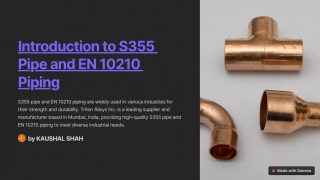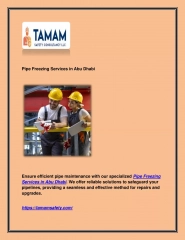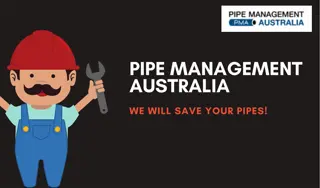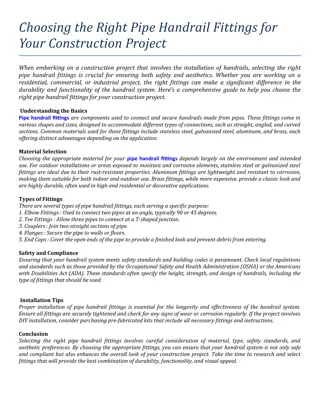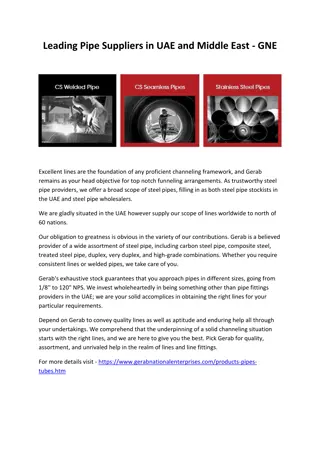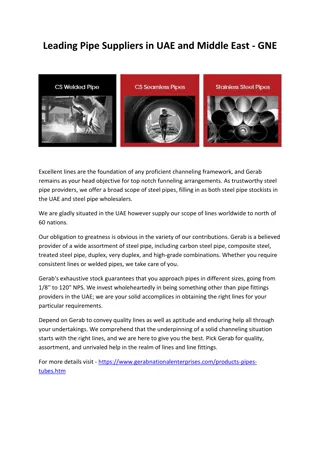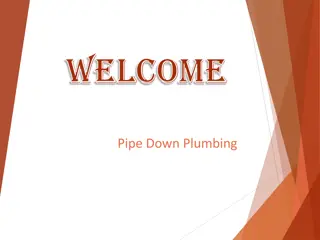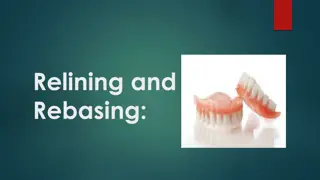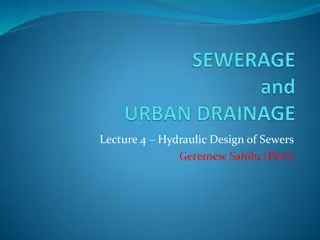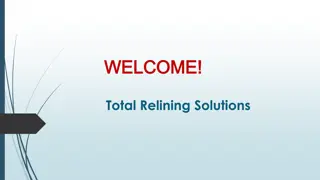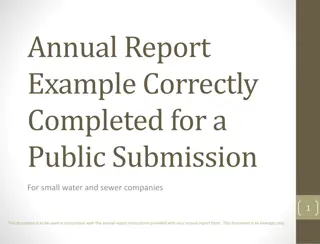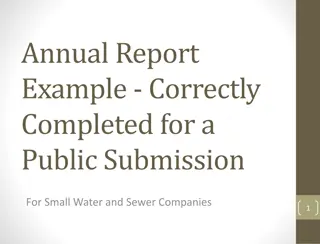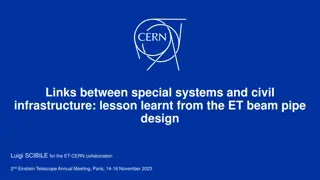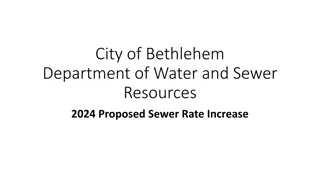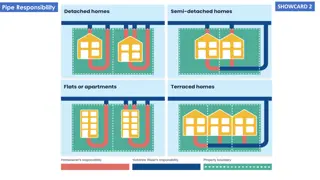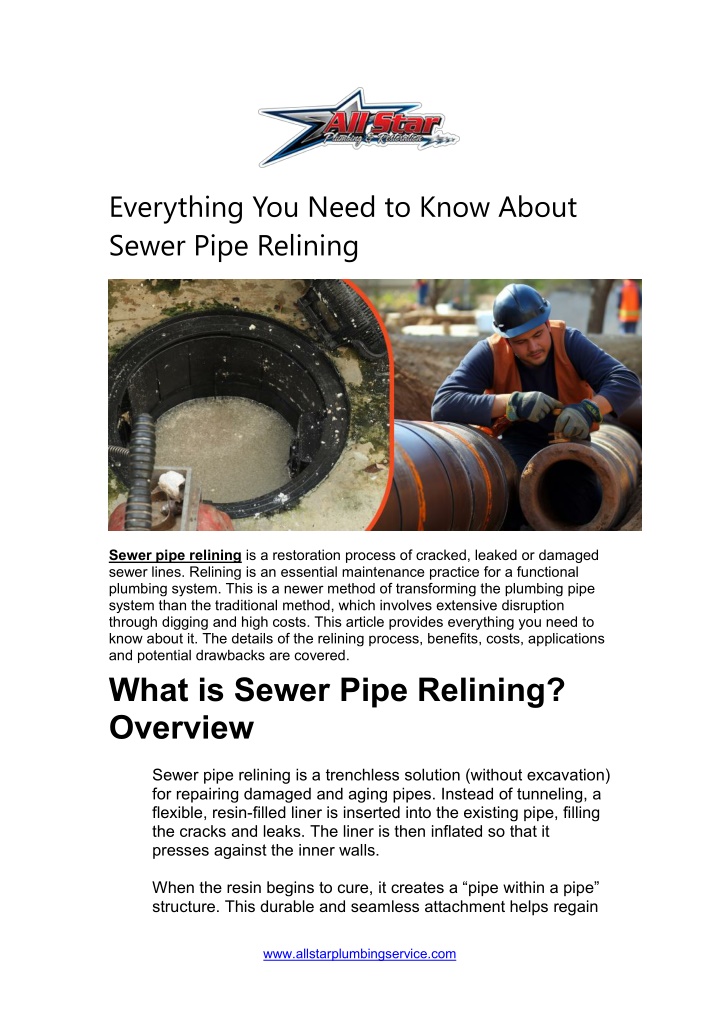
Everything You Need to Know About Sewer Pipe Relining
Sewer pipe relining is a restoration process of cracked, leaked or damaged sewer lines. Relining is an essential maintenance practice for a functional plumbing system. This is a newer method of transforming the plumbing pipe system than the tradition
Download Presentation

Please find below an Image/Link to download the presentation.
The content on the website is provided AS IS for your information and personal use only. It may not be sold, licensed, or shared on other websites without obtaining consent from the author. If you encounter any issues during the download, it is possible that the publisher has removed the file from their server.
You are allowed to download the files provided on this website for personal or commercial use, subject to the condition that they are used lawfully. All files are the property of their respective owners.
The content on the website is provided AS IS for your information and personal use only. It may not be sold, licensed, or shared on other websites without obtaining consent from the author.
E N D
Presentation Transcript
Everything You Need to Know About Sewer Pipe Relining Sewer pipe relining is a restoration process of cracked, leaked or damaged sewer lines. Relining is an essential maintenance practice for a functional plumbing system. This is a newer method of transforming the plumbing pipe system than the traditional method, which involves extensive disruption through digging and high costs. This article provides everything you need to know about it. The details of the relining process, benefits, costs, applications and potential drawbacks are covered. What is Sewer Pipe Relining? Overview Sewer pipe relining is a trenchless solution (without excavation) for repairing damaged and aging pipes. Instead of tunneling, a flexible, resin-filled liner is inserted into the existing pipe, filling the cracks and leaks. The liner is then inflated so that it presses against the inner walls. When the resin begins to cure, it creates a pipe within a pipe structure. This durable and seamless attachment helps regain www.allstarplumbingservice.com
the pipes structural integrity. Cracks and leaks are sealed, and root intrusion is prevented. This process is now widespread and preferred for its minimal disruption and efficiency. It also extends the lifespan of the sewer system and reduces the need for future repairs. The benefit of reducing costs is another attraction to the residents and businesses. Materials Used for Relining of Sewer Pipe Resin is made from two-part epoxy resin. It cures and hardens, forming a durable, tight seal, which creates a new sewer pipe lining. Liner, a carrier, is infused with resin and then inserted into the existing sewer pipe. It is made with felt or fiberglass material. After the liner is inserted into the pipe, the inflation bladder expands it. As it presses against the inner walls, the liner takes the shape of the existing pipe. UV light or hot water steam is used to speed up the curing or hardening of the inserted materials. This helps form a solid inner lining within the sewer pipe. After the relining is complete, tools are used to reopen any side connections or holes in the sewer pipe. Process of Sewer Pipe Relining This process of sewer pipe relining begins with inspecting the pipes through a drain camera. The technician assesses the extent of damage and formulates a repair strategy. After inspecting the condition, the damaged pipe is cleaned. All the debris or buildup is removed so that the lining does. A hydro-jetter is delivered at high pressure to remove grease and oils, ensuring that the new liner does not adhere to the dirt. www.allstarplumbingservice.com
After thorough cleaning, the lining materials are put in. This process begins by inserting a liner through a calibration tube. Technicians utilize either robotic technology or manual methods to reach the designated spot. Once positioned, the liner is inflated to create a tight seal against the pipe s inner surface. Heat or ultraviolet light is used to solidify the resin, forming a strong, continuous lining inside the pipe. After the resin cures, the pipe is inspected again to check the condition of the renewed sewer drain pipe. Applications of Sewer Pipe Relining For residential properties, there are fewer disturbances to landscapes and structures due to pipe relining. Traditional sewer repair methods cause extensive excavation and disturb lawns, gardens, and other structures. The pipe relining for sewers is thus advantageous for preserving landscaping and eliminating the need and cost of extensive restoration work. Relining is invaluable to commercial and industrial settings. Such operations are crucial in repairing damaged pipes with minimal disturbance. Adopting this method allows the continuation of the operations without interruption. This benefits commercial settings like restaurants, manufacturing facilities, or office buildings. This system rehabilitation method also benefits municipalities. Trenchless sewer pipe relining techniques reduce disruptions and allow municipalities to repair and maintain sewer infrastructure efficiently. This is a significant advantage over traditional repair methods, which involve road closures and disruptions to public service. This approach also extends the lifespan of the sewer system. www.allstarplumbingservice.com
When Should You Consider Pipe Relining? Sewer line relining would be required for issues such as pipe damage, leaks, blockages, or damage within a sewer system. Localized or moderate damage would require less cost and time, yet it is an efficient solution. Pipe relining will be advantageous for areas with less space or where pipes are placed underground. This method is attractive to businesses and residential property owners due to minimal disruption to surrounding infrastructure and reduced downtime. Structurally, it helps to enhance the lifespan of the sewer system. Checking the physical condition and compatibility of the existing pipes is essential for successful results. See that the material of the existing pipe is compatible with pipe materials such as PVC, cast iron, clay and concrete. Consider a durable and cost-effective pipe relining process for minimal disruption and efficient results. Moreover, this solution is more practical than traditional excavation and replacement methods. Advantages of Sewer Pipe Relining Minimal Disruption Trenchless sewer pipe relining minimizes disruption to surroundings. Infrastructure and landscape remain preserved as there is minimal disturbance. Cost-Effectiveness Adopting this method of pipe relining is seen as more cost- effective in the long run. It reduces labor-associated costs and property restoration costs, which would apply if the excavation method is employed. It also eliminates the need for potential future repairs. www.allstarplumbingservice.com
Durability and Longevity After relining, the frequency of maintenance is reduced. The relined pipes are more durable and have more longevity. Environmentally Friendly Due to the minimum excavation required, less wastage during the process, and lesser resource consumption, relining does not impact the environment more. Disadvantages and Limitations of Trenchless sewer pipe relining Access Limitations If the access points are limited, such as when sewer lines are located under buildings, roads or crowded areas. Tree roots or underground utilities are some obstructions that hinder access to sewer lines. This makes relining difficult. Complexities in Certain Situations Some previously fitted pipes may have different configurations. The presence of irregular shapes and bends makes liner insertion difficult for relining. Initial Investment Sewer line relining, though initially pricier than traditional methods, offers long-term cost efficiency. It reduces disruption, eliminates extensive restoration, and ensures durable pipes, potentially lowering future repair needs. These figures vary depending upon the technician and specific circumstances. The extent of damage and accessibility of the pipes also influence the final cost. These fluctuations remain a part of the process. However, pipe relining is a cost-effective option as compared to traditional repair methods. The benefits of savings by adopting this method are- Lower material costs Reduced labor needs Quick Method www.allstarplumbingservice.com
Maintenance and Aftercare Regular inspections should be made a part of monitoring the lining condition of the pipes and addressing emerging issues promptly. Implementing preventive measures at home and in offices, such as refraining from flushing non-biodegradable items, contributes to the enhanced lifespan of pipes. Furthermore, effectively managing root growth is crucial in maintaining pipe integrity. Know when to seek professional consultancy and assistance. It helps in effective maintenance and repairs. Conclusion Sewer pipe relining represents a transformative approach in modern technology for maintaining residential and commercial pipe systems. The benefits, processes and applications help make informed decisions to safeguard the infrastructure for the future. It truly stands as a cost-effective and efficient method for restoring the functionality of aging pipelines. Moreover, it is an eco-friendly solution, which minimizes disruption and long- term sustainability. Source link - https://www.allstarplumbingservice.com/everything-you-need-to- know-about-sewer-pipe-relining/ www.allstarplumbingservice.com
All Star Plumbing Address - 11956 Bernardo Plaza Dr unit 147, San Diego, CA (USA) - 92128 Phone - 858-923-5989 Mail - info@allstarplumbingservice.com Web - www.allstarplumbingservice.com www.allstarplumbingservice.com

